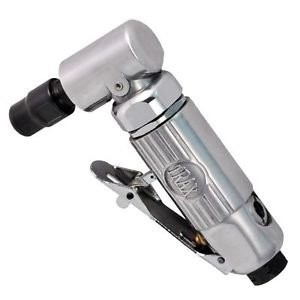Repairing rusted car bodywork is a common challenge for auto enthusiasts and professionals alike. Cutting out the damaged metal is the first crucial step in restoring a vehicle’s integrity and appearance. While an angle grinder might be your go-to tool for many tasks, larger rust repair projects and intricate areas often demand more specialized tools. This article explores the best grinder tools and alternatives for effectively cutting out rusted bodywork, ensuring clean cuts and efficient workflow.
When tackling significant rust removal, relying solely on a standard angle grinder can be limiting. Forum discussions among experienced car repairers highlight a range of tools that can make the job easier and more precise. Let’s delve into these options, considering their pros and cons for automotive bodywork repair.
Angle Grinders: The Versatile Starting Point
The angle grinder is a staple in any workshop, and for good reason. Its versatility makes it useful for a variety of tasks, including cutting metal. For car bodywork, a standard angle grinder with a thin cutting disc can be used to remove rusted sections.
Pros:
- Power and Speed: Angle grinders are powerful and can quickly cut through metal.
- Versatility: Adaptable for grinding, sanding, and cutting with different attachments.
- Availability and Cost: Widely available and relatively affordable.
Cons:
- Bulkiness: Can be cumbersome in tight spaces and awkward angles of car bodywork.
- Overheating: Generates heat that can warp thin body panels if not used carefully.
- Less Control: Can be aggressive and harder to control for precise cuts, potentially leading to overcutting.
Cut-Off Tools: Precision in Tight Spots
For more controlled cutting, especially in confined areas, smaller cut-off tools are invaluable. These tools, often pneumatic, utilize small diameter discs (around 75mm or 3 inches) and offer enhanced maneuverability.
Pros:
- Compact Size: Easier to use in tight corners, around curves, and within engine bays.
- Improved Visibility: Smaller discs provide a clearer view of the cutting line.
- Lighter Weight: Less fatiguing to use for extended periods compared to full-size angle grinders.
Cons:
- Air Consumption: Pneumatic cut-off tools require a powerful air compressor, and can consume air rapidly.
- Disc Wear: Smaller discs wear down quicker and may be more expensive in the long run compared to larger angle grinder discs.
- Power Limitation: Less powerful than full-size angle grinders, potentially slower for thicker metal.
An example of a pneumatic cut-off tool, ideal for detailed car bodywork cutting due to its compact design and enhanced control.
Air Saws and Sabre Saws: Maneuverability and Visibility
Air saws, also known as reciprocating saws or sabre saws, are another excellent option for cutting rusted bodywork. Their linear cutting action and slim profile offer advantages in specific situations.
Pros:
- Excellent Visibility: The blade operates in line with the tool, providing an unobstructed view of the cut.
- Maneuverability: Slim design allows access to tight spaces and curved panels.
- Reduced Heat: Generates less heat compared to abrasive cutting methods, minimizing warping risk.
- Lighter and Easier to Handle: Often lighter than angle grinders, reducing fatigue.
Cons:
- Slower Cutting Speed: Generally slower than angle grinders, especially on thicker metal.
- Blade Wear: Blades can wear out quickly, particularly when cutting through multiple layers or thicker steel. Using bi-metal blades with a fine tooth count (32 TPI or finer) is recommended for bodywork.
- Air Compressor Requirement: Pneumatic air saws need a capable air compressor. Electric sabre saws are available but may lack the power of air tools.
Cordless shears, a useful alternative for cutting thin sheet metal in car bodywork, offering clean cuts and reduced hand fatigue.
Die Grinders: Precision Cutting and Finishing
Die grinders, especially 90-degree models, are versatile tools that can be equipped with various attachments for cutting and finishing. They offer a balance of control and power for intricate bodywork repairs.
Pros:
- Versatile Attachments: Can use cutting discs, burrs, sanding discs (like Roloc), and grinding stones for various tasks from cutting to shaping and smoothing.
- Compact and Controllable: Smaller size and right-angle design allow for precise work in tight areas.
- Good Visibility: Offers a decent view of the work area.
Cons:
- Air Consumption: Pneumatic die grinders can consume a significant amount of air.
- Can be Less Powerful for Heavy Cutting: May not be ideal for cutting through very thick or heavily rusted sections compared to larger grinders.
 IMG_1674.JPG
IMG_1674.JPG
Spot Weld Drills: Separating Panels Effectively
When dealing with factory-welded panels, spot weld drills are essential for cleanly separating them without damaging surrounding metal.
Pros:
- Designed for Spot Welds: Specifically made to remove spot welds efficiently.
- Minimizes Damage: Reduces the risk of damaging surrounding panels compared to chiseling or prying.
- Clean Separation: Allows for cleaner panel removal, simplifying replacement and welding.
Cons:
- Specialized Tool: Primarily for spot weld removal, less versatile for general cutting.
- Requires Technique: Proper technique is needed to avoid drilling through both layers of metal.
Nibblers and Shears: Clean Cuts, Less Distortion
For thin gauge body panels, nibblers and shears offer a different approach to cutting, minimizing heat and distortion.
Pros:
- Clean, Burr-Free Cuts: Produce relatively clean edges without the burrs associated with abrasive cutting.
- Minimal Heat: Reduces heat input, preventing panel warping.
- Good for Curves and Shapes: Nibblers especially are adept at following curves and intricate shapes.
Cons:
- Hand Fatigue: Manual nibblers and shears can cause hand fatigue on larger jobs. Powered versions are available but more expensive.
- Slower than Grinders: Generally slower for straight cuts compared to grinders or cut-off tools.
- Limited to Thinner Gauge Steel: Best suited for thinner body panels, not ideal for chassis or thicker structural components.
Conclusion: Choosing the Right Tool for the Job
Selecting the best “Grinder Tool Car” for cutting rusted bodywork depends on the specific task, the location of the rust, and the type of metal being cut. While angle grinders remain a fundamental tool, supplementing them with cut-off tools, air saws, die grinders, spot weld drills, or nibblers can significantly improve efficiency and precision.
For large, open areas of rust, an angle grinder or cut-off tool can be effective. For tighter spaces, curved panels, or areas requiring more control, air saws, die grinders, or even hand tools like nibblers come into their own. Spot weld drills are indispensable for panel replacement, and shears offer a clean, low-distortion option for thinner metals.
By understanding the strengths and weaknesses of each tool, you can equip yourself to tackle any car bodywork rust repair project with the right “grinder tool car” for optimal results.

